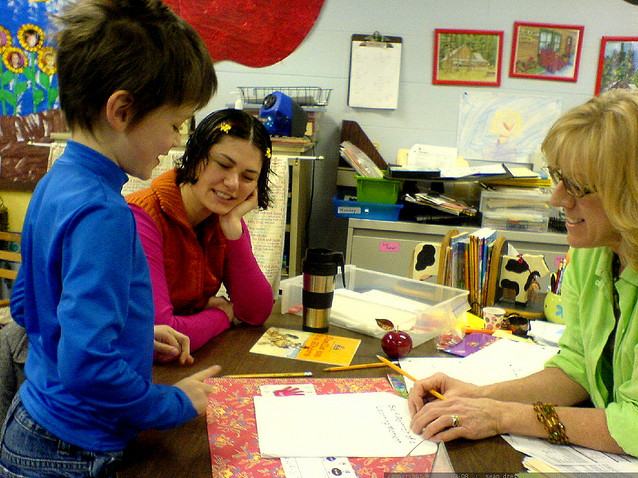How Can Parents and Speech Language Therapists Work Together?
Speech therapy is an exercise in successful collaboration. Not just between the SLP and the child, but between parents and SLPs, SLPs and teachers, SLPs and doctors or SLPs and other professionals. How many times have you ever done a job and wished you had some help? Be it cleaning up a room, filing your taxes or cooking a meal. Chances are, you wished you had some help for several reasons. Teamwork often gets the job done faster, makes the work easier, and helps you problem solve challenges. Effective and successful speech therapy requires the team approach with parents especially to promote generalization, enhance learning and ultimately achieve goals sooner.
Speech therapists may have different interactions with parents based on the setting in which they are treating a child. Early intervention settings, however, take place in the home already and are based on principles of collaboration between families and therapists. School-based SLPs may have few interactions with parents while those in private practice see them often. Regardless of the setting, consistent communication and interaction between all parties will ensure greater success than not.
Here are some strategies for successful collaboration between parents and speech language therapists.
Observation:
Parents who have the opportunity to observe speech therapy sessions should always do so. This does not entail an entire session, perhaps just a few minutes, to allow the therapist to model specific techniques in action. Often, therapists update parents on session progress, but have limited time to explain all of the tips and tricks after a session. Parents should not be shy about asking to be involved, observe or even participate in a session.
Homework:
In order to generalize skills, children need consistent carryover at home and in other environments. To ensure carryover, parents should ask and speech therapists should give “homework.” Homework doesn’t have to be checked or graded, but ensures that specific exercises or techniques aren’t forgotten outside of therapy. The goal is not to make a chore but to empower parents to be confident models and teachers of language. It also provides more opportunities for the child to practice vocabulary that might not naturally occur in the speech therapy setting (like grandma or bike riding). If both parties are not active in giving, accepting and doing homework, progress will be quiet challenging for the child.
Speech therapists sending homework should particularly provide parents with carryover ideas that are related to home (like mealtime games or car activities) or after school activities. If techniques are difficult to explain, try filming and sending a quick video home of how to use that technique.
Connect all team members:
In the world of pediatric therapy, it is not uncommon to see children who are receiving services from multiple providers. Connecting these providers via email or otherwise is a great way to get the wheels of communication going.
An innovative way to collaborate electronically is to use a website that provides secure networks for team members to share information. One website, Parlarei, does just that.
Sharing Information:
SLPs and parents must share information about not only techniques but progress or concerns. Parents should also share information with an SLP about upcoming events that are important to the child’s life, any life changes or language targets that are important to them. If the family just added a new baby to the family, that baby’s name would be pretty important to communicate and might be a good speech therapy target.
Creating a communication notebook is the easiest way to share information. This is a notebook that both SLPs and caregivers can write in daily and send between environments. It can include updates on progress or ideas for home carryover.
Another easy way to share information is to film and and send short video clips. This can be on a child’s iPad (if they use one) or emailed to a parent quickly from a smartphone to update them on progress.




